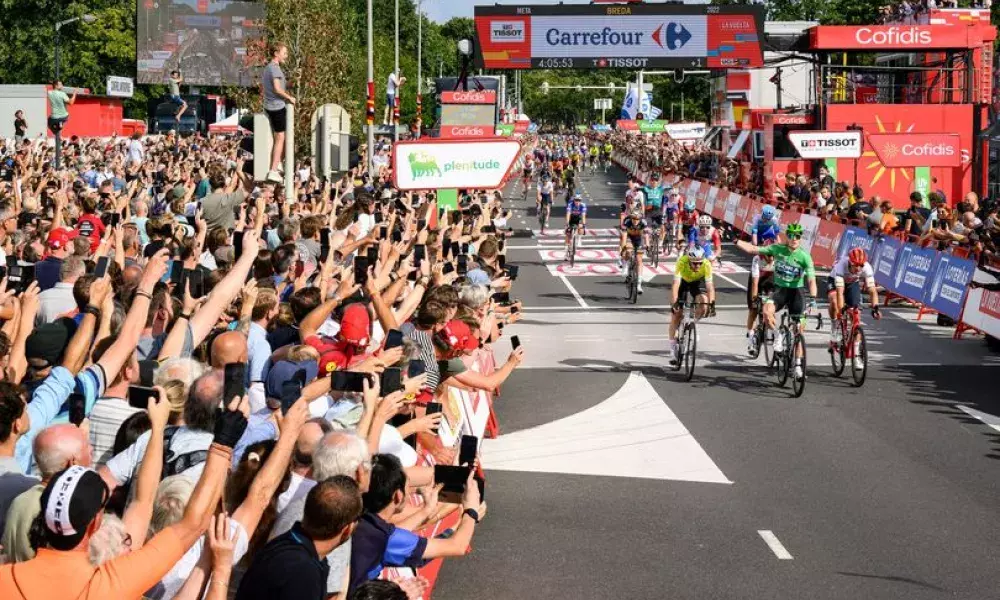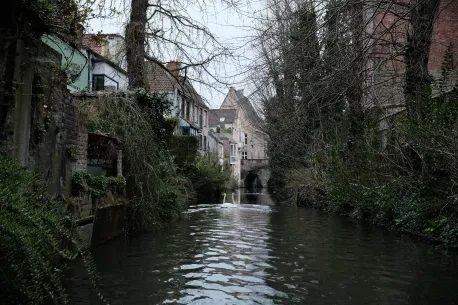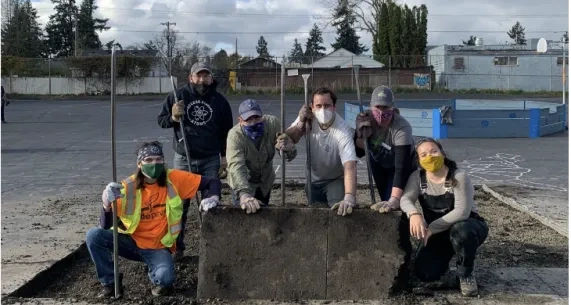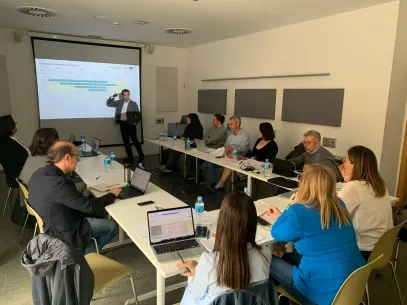
Due to COVID-19, the departure of La Vuelta from the Netherlands was postponed to the 2022 edition. For AirQon, this became a great opportunity: the delay allowed the AirQon solution to go further in its development. For this reason, the contacts made years ago with the person in charge of logistics of the competition in the Netherlands, Ron Looij, were quickly re-established. There was a lot of receptivity to adopting innovative, disruptive and green solutions like AirQon, as well as great enthusiasm that allowed us to explore possibilities for collaboration.
We quickly considered different options to combine AirQon with battery-powered and fixed grid-based solutions, in collaboration with municipalities and their accessible power supply points for public purposes. And when all this was not enough, we involved large buildings. This combination of flexible, green power sources is an outstanding lesson learned from this project.
Furthermore, the challenge is not only to make La Vuelta in the Netherlands a zero-emission event in Breda, but also to apply this goal in Utrecht and 's-Hertogenbosch. So far, the warm-up. Now, we leave behind the peloton of conventional diesel groups and start our getaway. La Vuelta begins!
At the beginning of this competition, prior to the first stage of the race, a large event was organized in Utrecht where all the teams were presented to the public. From an energy point of view, around 70% of the required power was provided by the TivoliVredenburg, which is an auditorium and event building managed by the Utrecht Municipality. Here we go in building-to-event mode!
This energy source was complemented with various municipal fixed power supply points in the square where the presentation took place, Vredenburgplein. These power supply points are inventoried and managed through Stroomkaart.nl, which is a map-based tool designed to help power in a greener way the energy needs of event organizers, construction companies, etc. Normally that square hosts a municipal street market, hence the power supply points there located were used for powering La Vuelta presentation. And to complete the powering of the event, there was an Electure battery container as well, perfect for a redundant energy system and peak shaver.
Electure is a startup closely related to AirQon, born as an evolution of the CO2tainer. From that first Minimum Viable Product, 5 more containers have been built. Each of these fully modular systems include batteries, renewable generation such as solar photovoltaic panels, a module to connect to the electricity distribution network if available, plus a biofuel generator or even hydrogen-powered generation.
This is an example of scalability and flexibility. A battery container like this can provide high power in unfavorable conditions, such as off-grid and long-lasting events or construction works. Indeed, a collaboration with a highway construction site made it possible to borrow an Electure battery container for a week to power La Vuelta.
For this stage, Jaarbeurs building was onboard to power the start area. This building is a large congress center, very famous in the Netherlands. And as in the day before in the presentation of La Vuelta, the start area had also available power supply points in the square located nearby, Jaarbeursplein, from Stroomkaart.nl. We therefore had an emission-free start.

AirQon enters the scene halfway through the course. An electric van Nissan e-NV200, via an AirQon outdoor charger, was used for powering the Tissot official timing metering point. In practice, this is a van, configured as a mobile office which transports all the precision equipment for accurate timing, as well as computers and communication devices. This advanced service provides data for TV broadcasting and race officials, for instance, and is normally powered by diesel generators -they are the more widespread solution so far- which are very noisy and annoying for them at work. Tissot staff was really happy with AirQon!
At the start of each stage there is a hospitality area, known as the village depart, from where cyclists proceed to access a stage where they are presented to the public and sign their participation in the stage of the day. Then, they are ready to head to the departure area, with characteristic start arch.
In this stage, the start arch was powered by the AirQon solution, with the same configuration used in the previous stage: a e-NV200 van plus an outdoor charger. In particular, AirQon powered a sound system and a timing display in this spot, which is located 200 meters away from the actual start line. This may seem simple, but it is a significant application because the only option, under normal conditions, is to use a diesel generator, so AirQon solved this efficiently and simply.
Besides AirQon, green electricity was also provided from the building to the event thanks to the Citadel of 's-Hertogenbosch. This is a fortress close to the town center of the city, constructed in the 17th century, which was perfectly suited to house and to power the village depart. In addition to this, the battery container from Electure powered the presentation stage and its video screens and sound systems, completing this sustainable stage start.
The Breda Castle, originally from the 12th century and home to a military academy attached to the Ministry of Defense, housed the village depart and powered it from their fixed grid out of the building. In addition to this, public power supply points of Kasteelplein square were available for powering the start area, from Stroomkaart.nl. Also a battery set from Boels was used in the start area; Boels is a diesel generator renting company that has diversified its range of solutions incorporating energy storage systems – an evidence of how the market is evolving!

As well as a zero-emission start, for the finish area, which was located opposite Chasseveld, green power from this theater was provided in building-to-event mode, along with power supply points available via Stroomkaart.nl. Furthermore, two side events took place in the finish area with a DJ stage, a music band stage, and several catering and beverages zones. One side event was powered with power supply points and the other with the Electure battery container, leading to this stage of La Vuelta completely green in AirQon's hometown.
But that is not all. In addition to all this, an EV plus an AirQon outdoor charger was available. In the case of this stage in Breda, because the travel time was avoided unlike for Utrecht and Hertogenbosch events, our solution was ready from the first moment to support the set up of the different stages and event zones, and the decommissioning works of this last stage in the Netherlands. In this sense, AirQon worked as a mobile energy source for powering tools, drills... and coffeemakers for the crew; coffee is also an essential component to organize such an event!
It must be taken into account that if people, event organizers, public administrations… do not get involved and do not take risks, the diesel generator would be always chosen as the only power source. Sometimes this may be due to the lack of time to carefully study the energy needs and see which power source -or a combination of them, as we see here- fits better. Because it may take months of planning to figure out what we may need for a big event like this, since each TV channel crew, each team, etc. has its own demands, although it was celebrated year by year. But providing an effective alternative is AirQon's raison d'être.
We are no longer talking about simple proofs of concept: La Vuelta, powered with green, sustainable, efficient power sources like AirQon has demonstrated that a new way of powering events is feasible today! We have to make it fit for purpose: AirQon is a mobile, modular, energy-intensive power source for smaller situations, so it is flexible and dynamic. That's why people love AirQon!
About this resource
The Urban Innovative Actions (UIA) is a European Union initiative that provided funding to urban areas across Europe to test new and unproven solutions to urban challenges. The initiative had a total ERDF budget of €372 million for 2014-2020.
Similar content




